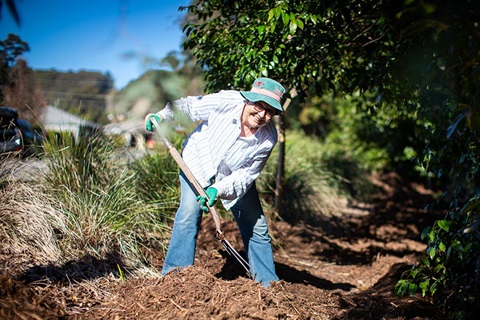About Landcare

Landcare is a grass roots volunteer movement supported by all three levels of government and the corporate sector to facilitate community stewardship of our environment. Landcarers have a passion for seeing our natural environment managed so that it will be there for future generations to enjoy. Visit Landcare Australia for more information on the national movement.
Landcarers in Lake Macquarie have an appreciation of the value of the natural areas in which we work. This includes the benefits of preserving our unique biodiversity, the importance of reducing erosion and sedimentation to the lake and taking care of our reserves for current and future generations.
Many of the processes that threaten our natural environment are the result of human impacts. Landcarers strive to reverse this process by working towards the protection of our fragile habitats from unsustainable land use practices.
Lake Macquarie Landcare groups seek to restore, rehabilitate and conserve the natural environment in bushland, parks, foreshores, estuaries, wetlands, creeks, and coastal areas on Council land, Crown land, and private land of high conservation significance.
Read more in the Lake Macquarie Landcare booklet(PDF, 2MB) and hear why our Landcarers volunteer in our promotional video.
On the coast
Coastcare/Dunecare groups typically help manage coastal systems. This involves the management of Bitou Bush Chrysanthemoides monilifera and a range of other environmental weeds, control of inappropriate beach access and regenerating coastal plant communities which help stabilise the City’s beaches.
Around the lake
Many Landcare groups are working towards the stabilisation of the lake’s foreshore. The issues that affect its stability are over-clearing, erosion and inappropriate human land uses. Landcare assists the regeneration of the lake edge in foreshore reserves to replace the shallow root systems of exotic grasses with the deep root systems of native species like Lomandra longifolia, Casuarina glauca, etc. These plants provide an important environmental service by stabilising the banks and filtering gross pollutants, sediments and nutrients from urban runoff.
In our bushland reserves
The great majority of Landcare groups in this city are working on remnant bushland. The primary efforts of these Landcare groups are focused on removal of exotic species like Lantana Lantana camara, and Privet Ligustrum spp, regeneration of the existing native plant communities, or revegetation of previously cleared reserves using locally sourced native species. These groups greatly increase biodiversity by maintaining, increasing or even creating critical habitat for our unique flora and fauna.
Streams and drainage lines
Many of the City’s reserves include streams and drainage lines. Vegetation in these areas has an enormous value through the natural water management and filtering processes they provide. Management of these natural filters involves the removal of exotic species, many of which have minimal filtering ability, and replanting or maintaining local native vegetation. Stormwater initiatives around the lake has included the use of Stormwater Quality Improvement Devices (SQIDs) to assist natural systems by removing gross pollutants and dissipating energy from urban drains. Landcare groups are helping with these initiatives by regenerating our catchments.